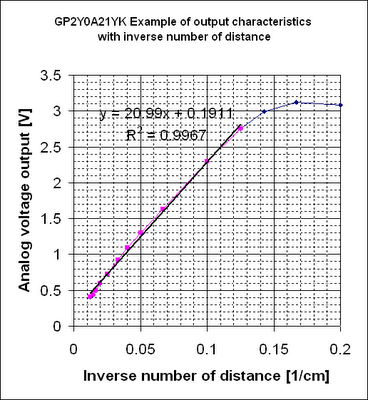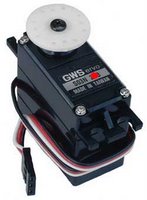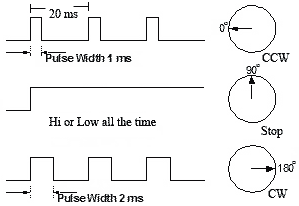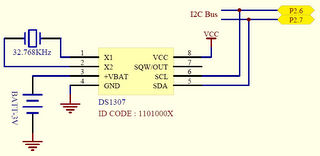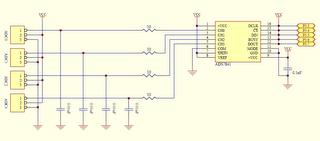This page is an installation guide for someone who are interested in developing 8051 microcontrllor with C-language. All of tools I selected are freeware or opensource with no limitation of number of lines of your code.
Contents
- Installing MIDE-51, Editor for 8051
- Installing SDCC, C Compiler for 8051
- Installing ASEM-51, Assembler for 8051
- Installing JSIM-51, Simulator for 8051
- Installing FlashMagic, ISP for Philips MPU
- Configuration
- Test
1. Installing MIDE-51
MIDE-51 is freeware Integrated Development Environment (IDE) for MCS-51 microcontroller. The full package already comes with:
Assembler : ASEM-51 by W.W.Heinz (v1.3)
C compiler : SDCC: Small Device C Compiler (v2.5.4)
Simulator : TS Controls 8051 Emulator v1.0 evaluation (Owner : http://www.tscontrols.com was gone)
Simulator : JSIM-51 Simulator by Jens Altmann (v4.05)
Just downloads midepack0258.exe and executes this file, everything will setup completely.
Feature on MIDE-51:
- Syntax highlighter on ASEM-51 reserved word & addition register on selected device (devices listed on ASEM51/MCU folder)
- Syntax highlighter on SDCC reserved word & MCS-51 standard register
- Support multi document workspace
- Support standard editor feature and shortcut key such as Cut , Copy, Paste, Find, Replace and Windows tile & cascade
- Editor font style and size selectable
- Save recent file(s) opened in list
- Shortcut to ASEM-51 html manual
- Shortcut to SDCC html & PDF manual (search file on SDCC/DOC)
- Report assembler & compiler message
- Support drag and drop file from explorer.
- Automatic save last windows position.
- Support wheel mouse
- Bookmark code position upto 10
- Show/Hide line number on editor
However, if you would like to use the newer version of them, you can also install each package manualy. First, downloads only editor version of MIDE-51 ( MIDE51_0258.zip) and extracts it to any directory (C:\MIDE51). You should have C:\MIDE51\MIDE51.EXE. For others package, please follow these instructions.
2. Installing SDCC
SDCC is a Freeware, retargettable, optimizing ANSI - C compiler that targets the Intel 8051, Maxim 80DS390, Zilog Z80 and the Motorola 68HC08 based MCUs. Work is in progress on supporting the Microchip PIC16 and PIC18 series. The entire source code for the compiler is distributed under GPL.
To install the SDCC, download the latest version from http://sdcc.sourceforge.net/snap.php#Windows (currently v2.6.x). SDCC are available for several different operating systems. I am working on a PC running Microsoft Windows XP therefore I download the win32 self-executing SDCC install file
(sdcc-20060818-4339-setup.exe) and run the executable. By default, it will install all files to C:\Program Files\SDCC, you also can change to any directory.
When finishing installing the program, a prompt will appear asking to add the directory containing the program binaries to your PATH. I also recommend you to download the SDCC documentation (sdcc-doc-20060818-4339.zip), and extract it to your SDCC documentation directory (C:\Program Files\SDCC\doc).
3. Installing ASEM-51
ASEM-51 is a two-pass macro assembler for the Intel MCS-51 family of microcontrollers. It is running on the PC under MS-DOS, Windows and Linux. The ASEM-51 assembly language is based on the standard Intel syntax, and implements conditional assembly, macros, and include file processing. The assembler can output object code in Intel-HEX or Intel OMF-51 format as well as a detailed list file. The ASEM-51 package includes support for more than 180 8051 derivatives, a bootstrap program for MCS-51 target boards, and documentation in ASCII and HTML format. And it is free ...
The simplest way of installing ASEM-51 is copying all files of the package to your working directory, and enjoy the benefits of true plug-and-play compatibility!. Alternatively, I have set it up on Windows XP manually:
- Downloads the lastest ASEM-51 for DOS/Windows (currently v1.3)
- Create a new, empty directory on your harddisk (C:\ASEM51).
- Unpack your ASEM-51 distribution archive into this directory, or copy all files of the ASEM-51 package into it.
- Make the scratch directory default, run the batch file INSTALL.BAT provided, and follow the instructions.
- Reboot your PC.
You can update MPU file by downloading http://plit.de/asem-51/mcufiles.zip.
4. Installing JSIM-51
JSIM-51 is a powerful software simulator for 8051 Microcontrollers and it's derivatives. The program simulates the processor kernel and some of the hardware functions. It was born due to all commercial products are too expensive for private users. It is free and opensource.
To install:
- Download 8051.zip ( DLL for simulation of a standard-8051 , V1.017 - 09/17/1998)
- Download 80320.zip ( DLL for simulation of a 80320 -Dallas , V1.019 - 10/03/2000)
- Download jsim_e.zip ( english version V4.05 from 01/08/2000)
Extract all files i.e., jsim.exe, 8051.dll and 80320.dll to your directory (C:\Jsim51).
5. Installing FlashMagic ISP Software
Flash Magic is a free, powerful, feature-rich Windows application that allows easy programming of Philips Flash Microcontrollers. Its function is to download compiled HEX file to your (Philips) microcontroller.
Please download and install the current version of FlashMagic.exe here.
6. Configuration
To combine every things:
- Execute MIDE-51.exe
- From menu bar, Edit-->Preference (F12)
- Click Tab C-Compiler, Edit your SDCC Path (C:\Program Files\SDCC)
- Click Tab Assembler, Edit your ASEM-51 Path (C:\ASEM51).
- Click Tab Simulaotr, Simulator Profile, select JSIM with 8051.dll, edit Execute file (Full path and filename) C:\JSIM51\jsim.exe.
- Now, everything is complete
7. Test
Execute MIDE-51.exe and File-->New (Ctrl+N), edit this code
#include <p89v51rd2.h>
unsigned char i;
void main() {
i=10;
}
Save to anyname.c and then Build (F9). You will found many files in the directory, one of them is .HEX file which can be downloaded to your MCU by using FlashMagic. Or, you can simulate it by using Jsim51, Build and Sim (Shift+Ctrl+F9).
Note: I tested on my P89V51RD2 MPU. Enjoy your 8051 microcontroller.
Related Links
Product Page: http://www.semiconductors.philips.com/
Data Sheet: P89V51RB2_RC2_RD2-03.pdf
Boot Loader: p89v_lv51rd2_bl_upd_v5.zip
FlashMagic ISP Software: http://www.esacademy.com/
SDCC : http://sdcc.sourceforge.net/
MIDE-51 : http://www.opcube.com/home.html
ASEM-51 : http://plit.de/asem-51/home.htm
JSIM-51 : http://home.arcor.de/jensaltmann/jsim-e.htm
 O'Reilly has published a book for Linux users interested in learning to build their own kernels. Linux Kernel in a Nutshell describes how to build and install Linux 2.6 kernels, starting with downloading the source. It was written by well-known kernel hacker Greg Kroah-Hartman.
O'Reilly has published a book for Linux users interested in learning to build their own kernels. Linux Kernel in a Nutshell describes how to build and install Linux 2.6 kernels, starting with downloading the source. It was written by well-known kernel hacker Greg Kroah-Hartman.






